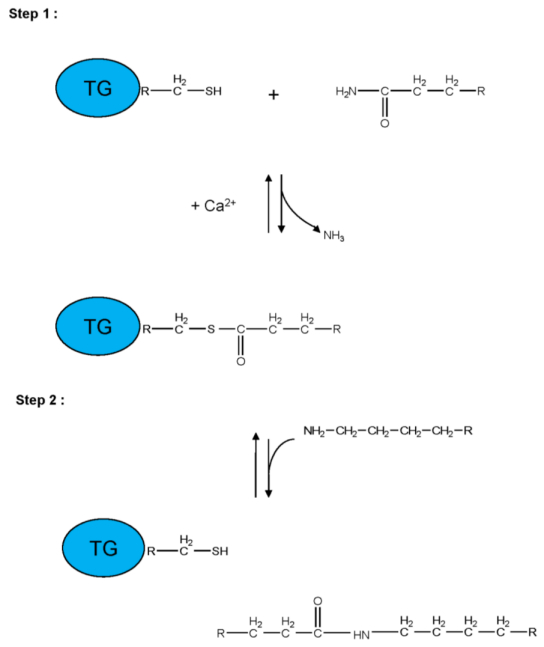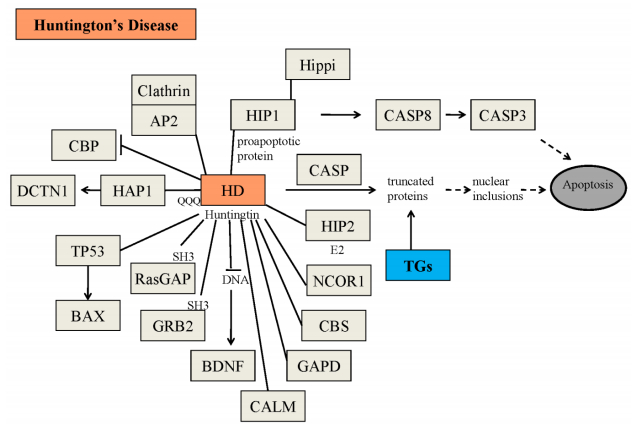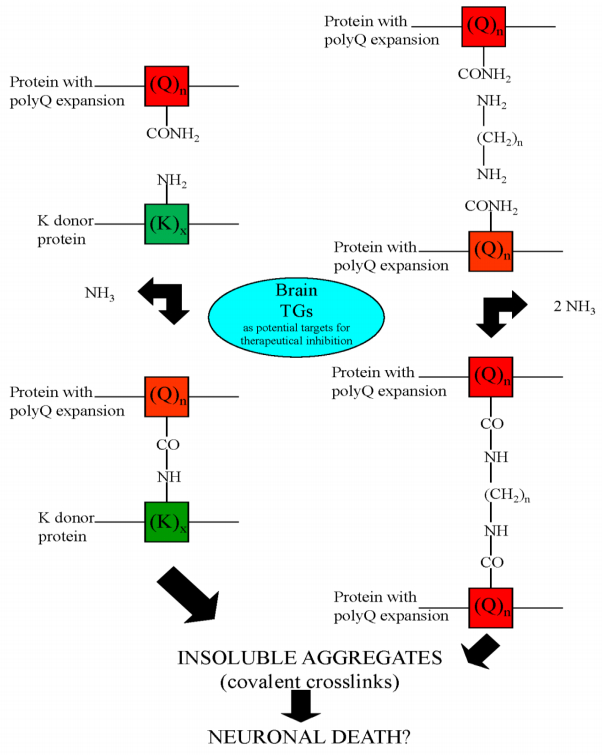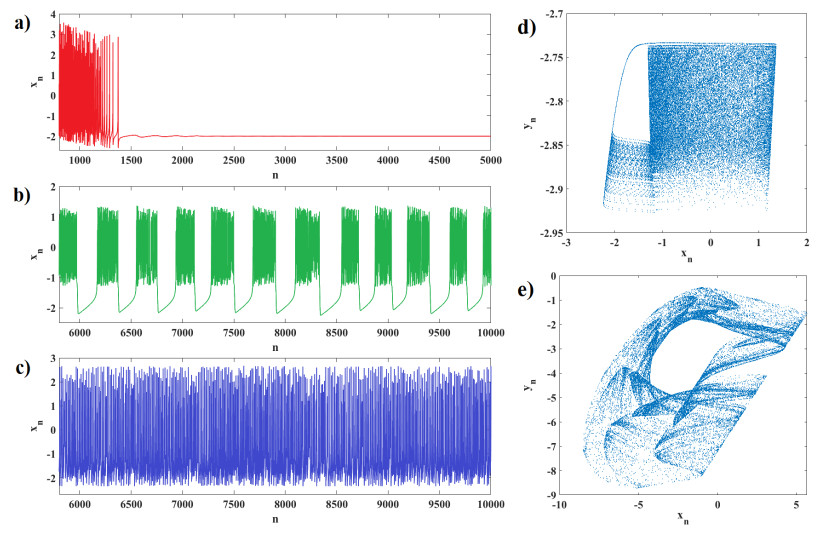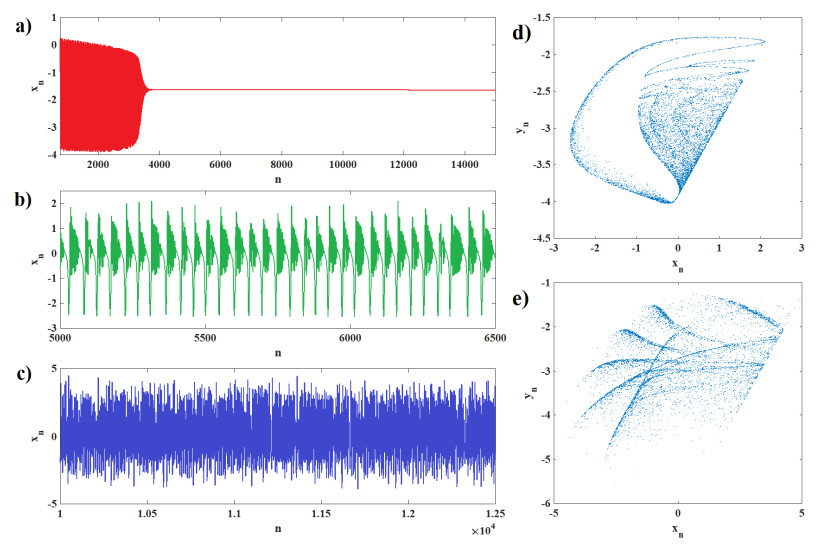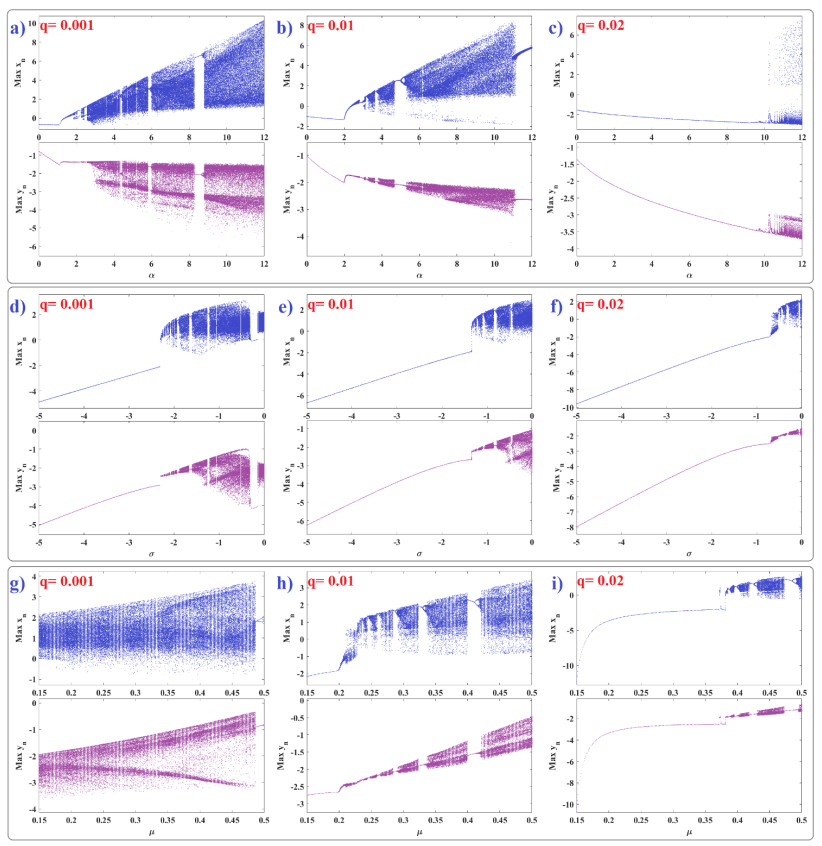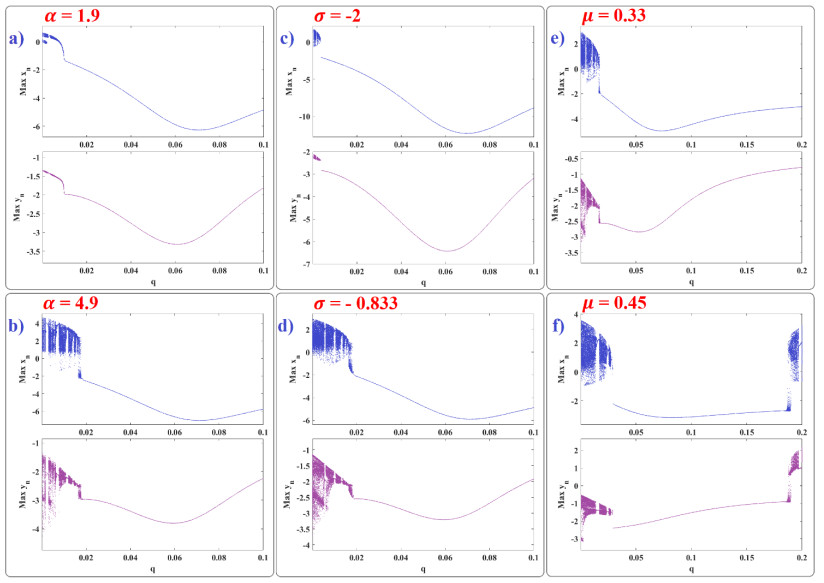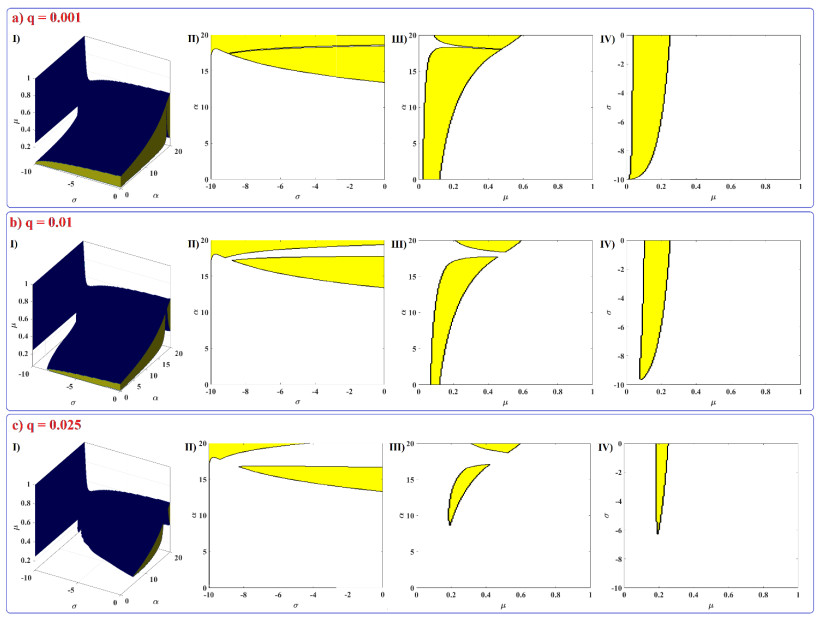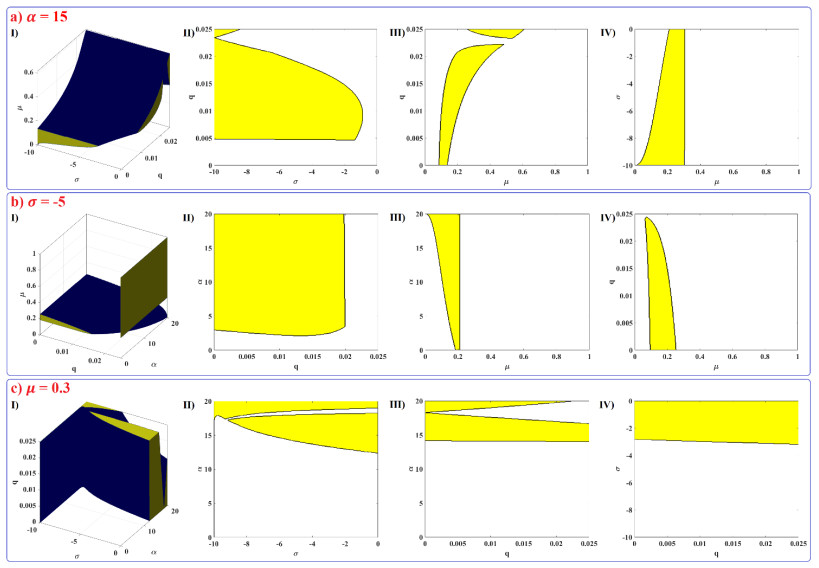|
[1]
|
F. Corinto, A. Torcini, Nonlinear dynamics in computational neuroscience, Springer, 2019. https://doi.org/10.1007/978-3-319-71048-8
|
|
[2]
|
D. Sterratt, B. Graham, A. Gillies, D. Willshaw, Principles of computational modelling in neuroscience, Cambridge University Press, 2011.
|
|
[3]
|
J. F. Tagne, H. C. Edima, Z. T. Njitacke, F. F. Kemwoue, R. N. Mballa, J. Atangana, Bifurcations analysis and experimental study of the dynamics of a thermosensitive neuron conducted simultaneously by photocurrent and thermistance, Eur. Phys. J. Spec. Top, 231 (2022), 993–1004. https://doi.org/10.1140/epjs/s11734-021-00311-w doi: 10.1140/epjs/s11734-021-00311-w

|
|
[4]
|
E. M. Izhikevich, Dynamical systems in neuroscience, MIT press, 2007.
|
|
[5]
|
D. Guo, S. Wu, M. Chen, M. Perc, Y. Zhang, J. Ma, et al., Regulation of irregular neuronal firing by autaptic transmission, Sci. Rep., 6 (2016), 1–14. https://doi.org/10.1038/srep26096 doi: 10.1038/s41598-016-0001-8

|
|
[6]
|
J. Ma, J. Tang, A review for dynamics in neuron and neuronal network, Nonlinear Dyn., 89 (2017), 1569–1578. https://doi.org/10.1007/s11071-017-3565-3 doi: 10.1007/s11071-017-3565-3

|
|
[7]
|
A. Foroutannia, M. Ghasemi, F. Parastesh, S. Jafari, M. Perc, Complete dynamical analysis of a neocortical network model, Nonlinear Dyn., 100 (2020), 2699–2714. https://doi.org/10.1007/s11071-020-05668-6 doi: 10.1007/s11071-020-05668-6

|
|
[8]
|
Q. Xu, X. Tan, D. Zhu, H. Bao, Y. Hu, B. Bao, Bifurcations to bursting and spiking in the Chay neuron and their validation in a digital circuit, Chaos Solit. Fract., 141 (2020), 110353. https://doi.org/10.1016/j.chaos.2020.110353 doi: 10.1016/j.chaos.2020.110353

|
|
[9]
|
A. L. Hodgkin, A. F. Huxley, A quantitative description of membrane current and its application to conduction and excitation in nerve, J. Physiol., 117 (1952), 500. https://doi.org/10.1113%2Fjphysiol.1952.sp004764 doi: 10.1113/jphysiol.1952.sp004764

|
|
[10]
|
R. FitzHugh, Impulses and physiological states in theoretical models of nerve membrane, Biophys. J., 1 (1961), 445–466. https://doi.org/10.1016/S0006-3495(61)86902-6 doi: 10.1016/S0006-3495(61)86902-6

|
|
[11]
|
Z. T. Njitacke, C. N. Takembo, J. Awrejcewicz, H. P. E. Fouda, J. Kengne, Hamilton energy, complex dynamical analysis and information patterns of a new memristive FitzHugh-Nagumo neural network, Chaos Solit. Fract., 160 (2022), 112211. https://doi.org/10.1016/j.chaos.2022.112211 doi: 10.1016/j.chaos.2022.112211

|
|
[12]
|
J. L. Hindmarsh, R. Rose, A model of neuronal bursting using three coupled first order differential equations, Proc. R Soc. London Ser. B, 221 (1984), 87–102. https://doi.org/10.1098/rspb.1984.0024 doi: 10.1098/rspb.1984.0024

|
|
[13]
|
Z. T. Njitacke, J. Awrejcewicz, A. N. K. Telem, T. F. Fozin, J. Kengne, Complex dynamics of coupled neurons through a memristive synapse: extreme multistability and its control with selection of the desired state, IEEE Trans. Circuits Syst. Ⅱ Express Briefs, (2022). https://doi.org/10.1109/TCSII.2022.3172141 doi: 10.1109/TCSII.2022.3172141

|
|
[14]
|
Z. T. Njitacke, T. F. Fozin, S. S. Muni, J. Awrejcewicz, J. Kengne, Energy computation, infinitely coexisting patterns and their control from a Hindmarsh–Rose neuron with memristive autapse: Circuit implementation, AEU Int. J. Electron. Commun., 155 (2022), 154361. https://doi.org/10.1016/j.aeue.2022.154361 doi: 10.1016/j.aeue.2022.154361

|
|
[15]
|
Z. N. Tabekoueng, S. S. Muni, T. F. Fozin, G. D. Leutcho, J. Awrejcewicz, Coexistence of infinitely many patterns and their control in heterogeneous coupled neurons through a multistable memristive synapse, Chaos, 32 (2022), 053114. https://doi.org/10.1063/5.0086182 doi: 10.1063/5.0086182

|
|
[16]
|
B. Ibarz, J. M. Casado, M. A. Sanjuán, Map-based models in neuronal dynamics, Phys. Rep., 501 (2011), 1–74. https://doi.org/10.1016/j.physrep.2010.12.003 doi: 10.1016/j.physrep.2010.12.003

|
|
[17]
|
M. Gosak, M. Milojević, M. Duh, K. Skok, M. Perc, Networks behind the morphology and structural design of living systems, Phys. Life Rev. (2022). https://doi.org/10.1016/j.plrev.2022.03.001 doi: 10.1016/j.plrev.2022.03.001

|
|
[18]
|
S. Majhi, M. Perc, D. Ghosh, Dynamics on higher-order networks: A review, J. R Soc. Interf., 19 (2022), 20220043. https://doi.org/10.1098/rsif.2022.0043 doi: 10.1098/rsif.2022.0043

|
|
[19]
|
M. Perc, Spatial coherence resonance in neuronal media with discrete local dynamics, Chaos Solit. Fract., 31 (2007), 64–69. https://doi.org/10.1016/j.chaos.2005.09.021 doi: 10.1016/j.chaos.2005.09.021

|
|
[20]
|
E. M. Izhikevich, Simple model of spiking neurons, IEEE Trans. Neural Networks, 14 (2003), 1569–1572. https://doi.org/10.1109/TNN.2003.820440 doi: 10.1109/TNN.2003.820440

|
|
[21]
|
J. Nagumo, S. Sato, On a response characteristic of a mathematical neuron model, Kybernetik, 10 (1972), 155–164. https://doi.org/10.1007/BF00290514 doi: 10.1007/BF00290514

|
|
[22]
|
K. Aihara, T. Takabe, M. Toyoda, Chaotic neural networks, Phys. Lett. A, 144 (1990), 333–340. https://doi.org/10.1016/0375-9601(90)90136-C doi: 10.1016/0375-9601(90)90136-C

|
|
[23]
|
F. Pasemann, A simple chaotic neuron, Physica D, 104 (1997), 205–211. https://doi.org/10.1016/S0167-2789(96)00239-4 doi: 10.1016/S0167-2789(96)00239-4

|
|
[24]
|
N. F. Rulkov, Modeling of spiking-bursting neural behavior using two-dimensional map, Phys. Rev. E, 65 (2002), 041922. https://doi.org/10.1103/PhysRevE.65.041922 doi: 10.1103/PhysRevE.65.041922

|
|
[25]
|
N. F. Rulkov, Regularization of synchronized chaotic bursts, Phys. Rev. Lett.., 86 (2001), 183. https://doi.org/10.1103/PhysRevLett.86.183 doi: 10.1103/PhysRevLett.86.183

|
|
[26]
|
M. Mehrabbeik, F. Parastesh, J. Ramadoss, K. Rajagopal, H. Namazi, S. Jafari, Synchronization and chimera states in the network of electrochemically coupled memristive Rulkov neuron maps, Math. Biosci. Eng., 18 (2021), 9394–9409. https://doi.org/10.3934/mbe.2021462 doi: 10.3934/mbe.2021462

|
|
[27]
|
B. Bao, J. Hu, J. Cai, X. Zhang, H. Bao, Memristor-induced mode transitions and extreme multistability in a map-based neuron model, Nonlinear Dyn.. (2022), 1–15. https://doi.org/10.1007/s11071-022-07981-8 doi: 10.1007/s11071-022-07981-8

|
|
[28]
|
K. Li, B. Bao, J. Ma, M. Chen, H. Bao, Synchronization transitions in a discrete memristor-coupled bi-neuron model, Chaos Solit. Fract., 165 (2022), 112861. https://doi.org/10.1016/j.chaos.2022.112861 doi: 10.1016/j.chaos.2022.112861

|
|
[29]
|
H. Sun, H. Cao, Synchronization of two identical and non-identical Rulkov models, Commun. Nonlinear Sci. Numer. Simul., 40 (2016), 15–27. https://doi.org/10.1016/j.cnsns.2016.04.011 doi: 10.1016/j.cnsns.2016.04.011

|
|
[30]
|
I. Franović, V. Miljković, The effects of synaptic time delay on motifs of chemically coupled Rulkov model neurons, Commun. Nonlinear Sci. Numer. Simul., 16 (2011), 623–633. https://doi.org/10.1016/j.cnsns.2010.05.007 doi: 10.1016/j.cnsns.2010.05.007

|
|
[31]
|
S. Rakshit, A. Ray, B. K. Bera, D. Ghosh, Synchronization and firing patterns of coupled Rulkov neuronal map, Nonlinear Dyn., 94 (2018), 785–805. https://doi.org/10.1007/s11071-018-4394-8 doi: 10.1007/s11071-018-4394-8

|
|
[32]
|
A. Wagemakers, M. A. Sanjuán, Electronic circuit implementation of the chaotic Rulkov neuron model, J. Franklin Inst., 350 (2013), 2901–2910. https://doi.org/10.1016/j.jfranklin.2013.01.026 doi: 10.1016/j.jfranklin.2013.01.026

|
|
[33]
|
K. Li, H. Bao, H. Li, J. Ma, Z. Hua, B. Bao, Memristive Rulkov neuron model with magnetic induction effects, IEEE Trans. Ind. Inf., 18 (2021), 1726–1736. https://doi.org/10.1109/TII.2021.3086819 doi: 10.1109/TII.2021.3086819

|
|
[34]
|
L. Cheng, H. Cao, Synchronization dynamics of two heterogeneous chaotic Rulkov neurons with electrical synapses, Int. J. Bifurc. Chaos, 27 (2017), 1730009. https://doi.org/10.1142/S0218127417300099 doi: 10.1142/S0218127417300099

|
|
[35]
|
J. Ma, Biophysical neurons, energy, and synapse controllability: A review, J. Zhejiang Univ. Sci. A, (2022).
|
|
[36]
|
Y. Xie, Z. Yao, J. Ma, Phase synchronization and energy balance between neurons, Front. Inf. Technol. Electron. Eng., (2022), 1–14. https://doi.org/10.1631/FITEE.2100563 doi: 10.1631/FITEE.2100563

|
|
[37]
|
M. Rahimy, Applications of fractional differential equations, Appl. Math. Sci., 4 (2010), 2453–2461.
|
|
[38]
|
L.-L. Huang, G.-C. Wu, D. Baleanu, H.-Y. Wang, Discrete fractional calculus for interval–valued systems, Fuzzy Sets Syst., 404 (2021), 141–158. https://doi.org/10.1016/j.fss.2020.04.008 doi: 10.1016/j.fss.2020.04.008

|
|
[39]
|
F. M. Atici, P. Eloe, Discrete fractional calculus with the nabla operator, Electron. J. Qual. Theory Differ Equ., 2009 (2009), 12, electronic only. https://doi.org/10.14232/ejqtde.2009.4.3
|
|
[40]
|
G. A. Anastassiou, Principles of delta fractional calculus on time scales and inequalities, Math. Comput. Modell., 52 (2010), 556–566. https://doi.org/10.1016/j.mcm.2010.03.055 doi: 10.1016/j.mcm.2010.03.055

|
|
[41]
|
Y. Wang, K. Sun, S. He, H. Wang, Dynamics of fractional-order sinusoidally forced simplified Lorenz system and its synchronization, Eur. Phys. J. Spec. Top, 223 (2014), 1591–1600. https://doi.org/10.1140/epjst/e2014-02181-3 doi: 10.1140/epjst/e2014-02181-3

|
|
[42]
|
K. Rajagopal, A. Karthikeyan, S. Jafari, F. Parastesh, C. Volos, I. Hussain, Wave propagation and spiral wave formation in a Hindmarsh–Rose neuron model with fractional-order threshold memristor synaps, Int. J. Mod. Phys. B, 34 (2020), 2050157. https://doi.org/10.1142/S021797922050157X doi: 10.1142/S021797922050157X

|
|
[43]
|
B. Ramakrishnan, F. Parastesh, S. Jafari, K. Rajagopal, G. Stamov, I. Stamova, Synchronization in a Multiplex Network of Nonidentical Fractional-Order Neurons, Fractal Fract, 6 (2022), 169. https://doi.org/10.3390/fractalfract6030169 doi: 10.3390/fractalfract6030169

|
|
[44]
|
W. M. Ahmad, J. C. Sprott, Chaos in fractional-order autonomous nonlinear systems, Chaos Solit. Fract., 16 (2003), 339–351. https://doi.org/10.1016/S0960-0779(02)00438-1 doi: 10.1016/S0960-0779(02)00438-1

|
|
[45]
|
L. Wang, K. Sun, Y. Peng, S. He, Chaos and complexity in a fractional-order higher-dimensional multicavity chaotic map, Chaos Solit. Fract., 131 (2020), 109488. https://doi.org/10.1016/j.chaos.2019.109488 doi: 10.1016/j.chaos.2019.109488

|
|
[46]
|
Y. Peng, S. He, K. Sun, Chaos in the discrete memristor-based system with fractional-order difference, Results Phys., 24 (2021), 104106. https://doi.org/10.1016/j.rinp.2021.104106 doi: 10.1016/j.rinp.2021.104106

|
|
[47]
|
G.-C. Wu, D. Baleanu, Discrete chaos in fractional delayed logistic maps, Nonlinear Dyn., 80 (2015), 1697–1703. https://doi.org/10.1007/s11071-014-1250-3 doi: 10.1007/s11071-014-1250-3

|
|
[48]
|
A. Elsonbaty, Z. Sabir, R. Ramaswamy, W. Adel, Dynamical analysis of a novel discrete fractional SITRs model for COVID-19, Fractals, (2021), 2140035. https://doi.org/10.1142/S0218348X21400351 doi: 10.1142/S0218348X21400351

|
|
[49]
|
S. Kassim, H. Hamiche, S. Djennoune, M. Bettayeb, A novel secure image transmission scheme based on synchronization of fractional-order discrete-time hyperchaotic systems, Nonlinear Dyn., 88 (2017), 2473–2489. https://doi.org/10.1007/s11071-017-3390-8 doi: 10.1007/s11071-017-3390-8

|
|
[50]
|
M. R. Dar, N. A. Kant, F. A. Khanday, Dynamics and implementation techniques of fractional-order neuron models: A survey, Fract. Order Syst., (2022), 483–511. https://doi.org/10.1016/B978-0-12-824293-3.00017-X doi: 10.1016/B978-0-12-824293-3.00017-X

|
|
[51]
|
D. M. Gash, A. S. Deane, Neuron-based heredity and human evolution, Front. Neurosci., 9 (2015), 209. https://doi.org/10.3389%2Ffnins.2015.00209 doi: 10.3389%2Ffnins.2015.00209

|
|
[52]
|
S. Rakshit, S. Majhi, J. Kurths, D. Ghosh, Neuronal synchronization in long-range time-varying networks, Chaos, 31 (2021), 073129. https://doi.org/10.1063/5.0057276 doi: 10.1063/5.0057276

|
|
[53]
|
Q. Xu, T. Liu, S. Ding, H. Bao, Z. Li, B. Chen, Extreme multistability and phase synchronization in a heterogeneous bi-neuron Rulkov network with memristive electromagnetic induction, J. Cogn. Neurosci., , (2022), 1–12. https://doi.org/10.1007/s11571-022-09866-3 doi: 10.1007/s11571-022-09866-3

|
|
[54]
|
K. Clark, R. F. Squire, Y. Merrikhi, B. Noudoost, Visual attention: Linking prefrontal sources to neuronal and behavioral correlates, Prog. Neurobiol., 132 (2015), 59–80. https://doi.org/10.1016/j.pneurobio.2015.06.006 doi: 10.1016/j.pneurobio.2015.06.006

|
|
[55]
|
J. Ma, J. Tang, A review for dynamics of collective behaviors of network of neurons, Sci. China Technol. Sci., 58 (2015), 2038–2045. https://doi.org/10.1007/s11431-015-5961-6 doi: 10.1007/s11431-015-5961-6

|
|
[56]
|
J. Munkhammar, Chaos in a fractional order logistic map, Fract. Calc. Appl. Anal., 16 (2013), 511–519. https://doi.org/10.2478/s13540-013-0033-8 doi: 10.2478/s13540-013-0033-8

|
|
[57]
|
M.-F. Danca, Puu system of fractional order and its chaos suppression, Symmetry, 12 (2020), 340. https://doi.org/10.3390/sym12030340 doi: 10.3390/sym12030340

|
|
[58]
|
T. Abdeljawad, On Riemann and Caputo fractional differences, Comput. Math. Appl., 62 (2011), 1602–1611. https://doi.org/10.1016/j.camwa.2011.03.036 doi: 10.1016/j.camwa.2011.03.036

|
|
[59]
|
M. T. Holm, The Laplace transform in discrete fractional calculus, Comput. Math. Appl., 62 (2011), 1591–1601. https://doi.org/10.1016/j.camwa.2011.04.019 doi: 10.1016/j.camwa.2011.04.019

|
|
[60]
|
F. Atici, P. Eloe, Initial value problems in discrete fractional calculus, Proc. Am. Math. Soc., 137 (2009), 981–989. https://doi.org/10.1090/S0002-9939-08-09626-3 doi: 10.1090/S0002-9939-08-09626-3

|
|
[61]
|
A. Chen, Y. Chen, Existence of solutions to anti-periodic boundary value problem for nonlinear fractional differential equations with impulses, Adv. Differ. Equat., 2011 (2011), 1–17. https://doi.org/10.1155/2011/915689 doi: 10.1155/2011/915689

|
|
[62]
|
W. Gerstner, W. M. Kistler, Spiking neuron models: Single neurons, populations, plasticity, Cambridge university press, 2002.
|
|
[63]
|
A. Gangopadhyay, D. Mehta, S. Chakrabartty, A spiking neuron and population model based on the growth transform dynamical system, Front. Neurosci., 14 (2020), 425. https://doi.org/10.3389/fnins.2020.00425 doi: 10.3389/fnins.2020.00425

|
|
[64]
|
R. Nickalls, Viete, Descartes and the cubic equation, Math. Gaz., 90 (2006), 203–208. https://doi.org/10.1017/S0025557200179598 doi: 10.1017/S0025557200179598

|
|
[65]
|
J. Čermák, I. Győri, L. Nechvátal, On explicit stability conditions for a linear fractional difference system, Fract. Calc. Appl. Anal., 18 (2015), 651–672. https://doi.org/10.1515/fca-2015-0040 doi: 10.1515/fca-2015-0040

|
|
[66]
|
H. Sun, H. Cao, Complete synchronization of coupled Rulkov neuron networks, Nonlinear Dyn., 84 (2016), 2423–2434. https://doi.org/10.1007/s11071-016-2654-z doi: 10.1007/s11071-016-2654-z

|
|
[67]
|
D. A. Gusnard, M. E. Raichle, Searching for a baseline: Functional imaging and the resting human brain, Nat. Rev. Neurosci., 2 (2001), 685–694. https://doi.org/10.1038/35094500 doi: 10.1038/35094500

|
|
[68]
|
S. G. Horovitz, A. R. Braun, W. S. Carr, D. Picchioni, T. J. Balkin, M. Fukunaga, et al., Decoupling of the brain's default mode network during deep sleep, Proc. Natl. Acad. Sci., 106 (2009), 11376–11381. https://doi.org/10.1073/pnas.0901435106 doi: 10.1073/pnas.0901435106

|
|
[69]
|
K. Rajagopal, S. Panahi, M. Chen, S. Jafari, B. Bao, Suppressing spiral wave turbulence in a simple fractional-order discrete neuron map using impulse triggering, Fractals, 29 (2021), 2140030. https://doi.org/10.1142/S0218348X21400302 doi: 10.1142/S0218348X21400302

|
|
[70]
|
O. Brandibur, E. Kaslik, D. Mozyrska, M. Wyrwas, A Rulkov neuronal model with Caputo fractional variable-order differences of convolution type, Dynam. Syst. Theory Appl., (2019), 227–235. https://doi.org/10.1007/978-3-030-77310-6_20 doi: 10.1007/978-3-030-77310-6_20

|
|
[71]
|
L. J. Liu, Y. H. Qin, Dynamics of discrete memristor-based Rulkov neuron, IEEE Access, 10 (2022), 72051–72056. https://doi.org/10.1109/ACCESS.2022.3188787 doi: 10.1109/ACCESS.2022.3188787

|
|
[72]
|
O. Brandibur, E. Kaslik, D. Mozyrska, M. Wyrwas, Stability of systems of fractional-order difference equations and applications to a Rulkov-type neuronal model, New Trends Nonlinear Dyn., (2020), 305–314. https://doi.org/10.1007/978-3-030-34724-6_31 doi: 10.1007/978-3-030-34724-6_31

|









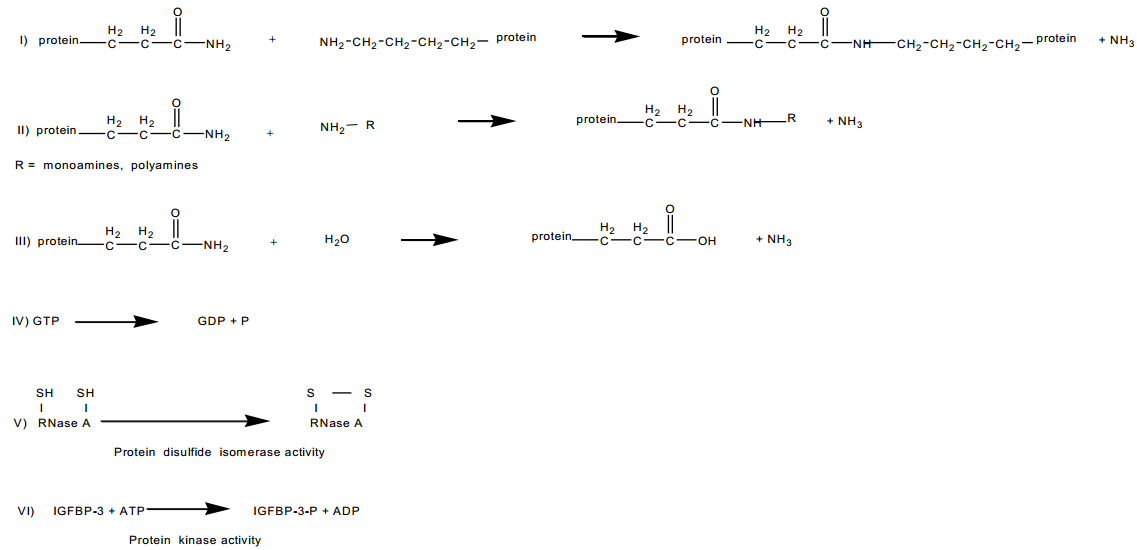
 DownLoad:
DownLoad: 